Envision pulling up to your home and feeling an instant sense of pride—the kind that comes from knowing your house looks stunning and stands strong against whatever nature throws its way. That’s the power of great siding. It’s not just a façade; it’s a statement that combines style with substance.
Choosing the right siding isn’t just about looks; it’s about finding the perfect balance of beauty, durability, and energy efficiency. The choices of vinyl, wood, fiber cement, and metal can seem endless, but each material offers its unique charm and benefits.
In this article, we will explore the various aspects of siding, from materials and installation to maintenance and trends. We will provide you with the knowledge you need to navigate this essential component of home improvement.
Dive into the world of siding, where every option tells a story, and discover the secrets to choosing a look that protects and transforms your home into something extraordinary!
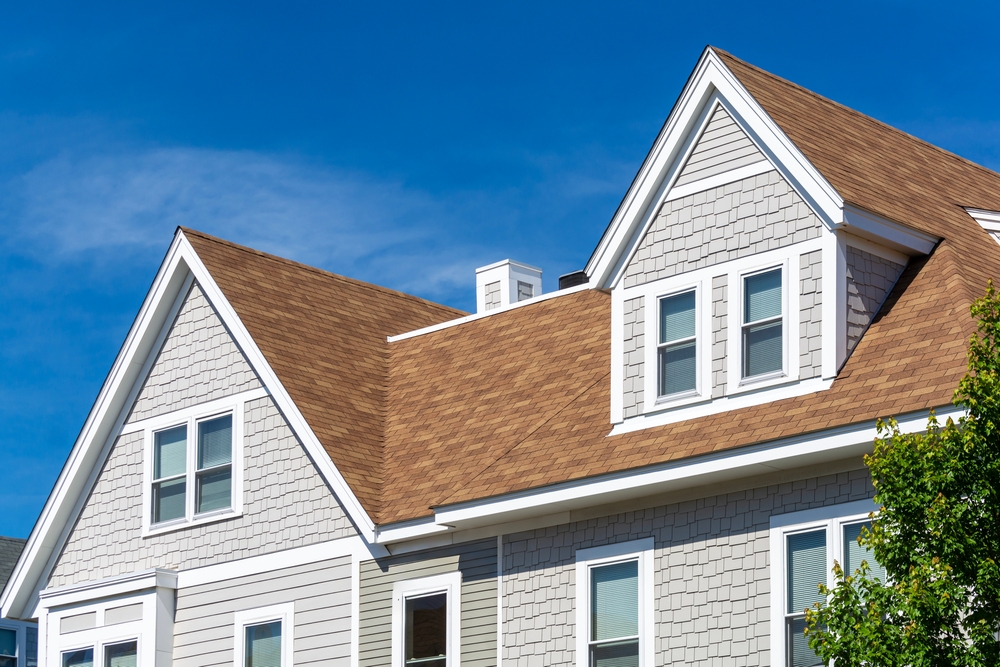
Types of Siding Materials
Vinyl siding
Vinyl siding has become a popular choice among homeowners due to its durability and resistance to weather damage, pests, and rot. This low-maintenance option requires only occasional washing with soap and water, making it easy to care for over time. Vinyl siding is also cost-effective, providing savings during installation and long-term upkeep.
Available in a wide range of colors and styles, vinyl can even mimic the appearance of wood or stone. Since the color is integrated into the material, it won’t fade or require repainting, ensuring your home maintains its attractive appearance for years.
Wood siding
Wood siding offers a classic, natural aesthetic that can be easily customized with paint or stain in any color, making it a versatile choice for frequent updates. Popular options include cedar, pine, and redwood, each known for its unique characteristics. Some varieties provide natural resistance to rot and insects.
However, wood siding demands more maintenance, including regular painting or staining and careful monitoring for signs of rot, warping, and pests. But with proper care, it can remain durable and retain its appealing look for many years.
Fiber cement siding
Fiber cement siding is composed of cement, sand, and wood fibers, creating a durable material capable of withstanding harsh weather conditions and resisting pests. With proper maintenance, this type of siding can endure for many decades.
One of the key advantages of fiber cement is its versatility in appearance. It can be manufactured to mimic the look of other materials, such as wood, stucco, or brick, and is available in a wide range of textures and colors. This flexibility complements nearly any architectural style, enhancing a home’s curb appeal.
Additionally, fiber cement is highly resistant to fire, providing an extra layer of protection for homes in wildfire-prone areas. This fire-resistant quality can be a critical factor in keeping your home safer.
Metal siding
Metal siding, whether aluminum or steel, provides distinct advantages: steel is known for its strength, while aluminum is lighter and more rust-resistant. This type of siding can enhance energy efficiency by reflecting heat, which helps lower cooling costs and may include additional insulation for even better performance.
Renowned for its modern aesthetic, metal siding is commonly used on contemporary and industrial-style homes. It can be painted in any color to achieve the desired look, offering versatility in design. Its durability and low-maintenance qualities make it a practical choice for many homeowners.
Brick and stone siding
Brick and stone are some of the most durable siding materials available, with a lifespan that can span centuries when properly maintained. They offer excellent resistance to fire, pests, and harsh weather conditions.
During the day, these materials absorb heat and gradually release it at night, helping to stabilize indoor temperatures and potentially reduce heating and cooling costs. While brick and stone siding requires occasional maintenance—such as repointing mortar and cleaning to prevent mold and mildew—it typically demands less upkeep than many other siding options.
Choosing the Right Siding Material
Several factors come into play when choosing siding for your home. To simplify the process, let’s focus on three key areas: evaluating your specific needs, considering durability and maintenance requirements, and examining energy efficiency and sustainability. Below, we elaborated more on the areas.
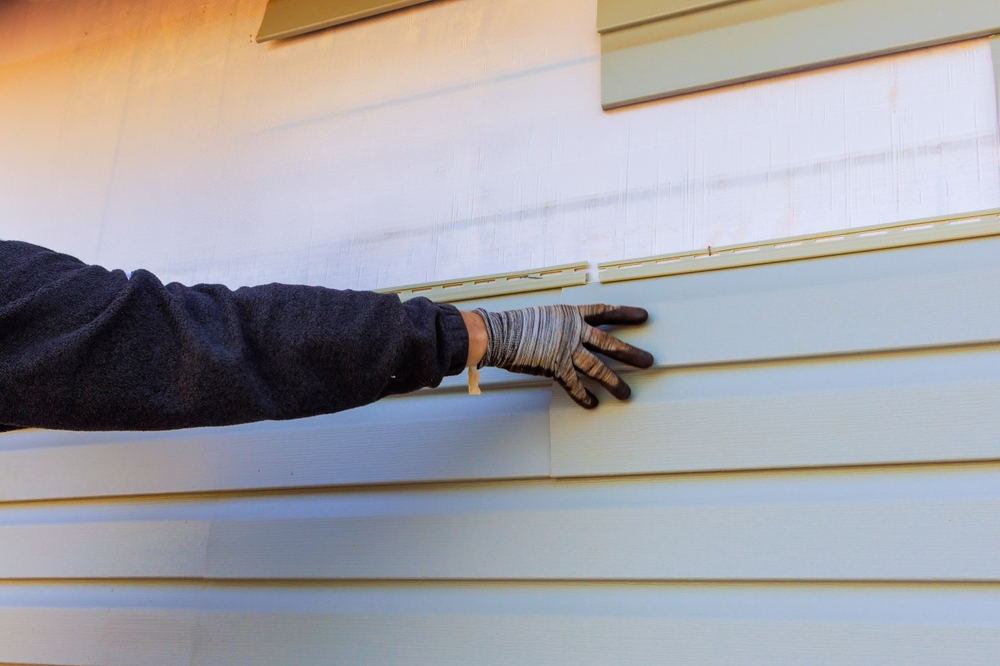
Assessing your needs
Consider your local climate, budget, and desired appearance when choosing siding. Opt for materials that can endure weather conditions and fit your financial plan, ensuring a balance between initial costs and long-term maintenance.
Next, select a style and color that reflects your taste and harmonizes with your neighborhood’s aesthetic. Take the time to explore different options and visualize their impact on your home. If needed, consult with professionals to help make a well-informed decision.
Material longevity and maintenance
When choosing siding options, it’s crucial to consider both durability and maintenance requirements. Some materials are designed to last for decades with minimal care, while others may require regular painting or repairs. Assess how much time and money you are willing to invest in upkeep.
Additionally, evaluate whether repairs are manageable on your own or if they will necessitate professional assistance, as this can affect future costs. When deciding, consider the impact on your home’s value, overall aesthetic, and potential resale value.
Energy efficiency and sustainability
Think of how your choice of siding affects energy use and the environment. High-quality siding can help maintain a comfortable temperature in your home throughout the year, reducing your energy bills by keeping it warm in winter and cool in summer.
Furthermore, some siding materials are more environmentally friendly. They may be made from recycled materials or be recyclable. Also, evaluate how the siding is manufactured and whether it can contribute to energy savings over time.
By taking these factors into account, you can select siding that benefits your home, your budget, and the environment. Take your time to research and choose wisely, as the right siding will impact your home’s performance and sustainability.
Process of Siding Installation
Initial consultation and assessment
The siding installation process starts with a contractor visiting your home to discuss your preferences and assess the exterior for any potential issues. They measure your house to determine the necessary materials and calculate the cost, then provide you with a detailed estimate.
Next, the contractor outlines a schedule for the project, highlighting any potential challenges. The work can begin once you agree on the start date, confirm the final details, and review the contract to ensure everything is clear.
Choosing the right materials
Now, you need to choose your siding type from vinyl, fiber cement, or wood options. The contractor will detail the benefits, drawbacks, lifespan, and maintenance requirements of each choice, as well as their costs. Plus, you’ll decide on siding specifics like color, orientation, trim, and insulation for enhanced energy efficiency.
The contractor will also explain how each siding option will impact your home’s appearance and performance. They will ensure that all your preferences and needs are thoroughly addressed before you make your final decision.
Preparing the exterior
Before new siding can be installed, the old siding must first be removed. The process begins with carefully stripping away the old material, removing old nails, and thoroughly cleaning the walls. During this stage, the experts inspect the underlying surface for any damage, such as rotted wood or water issues, and will notify you of any necessary repairs.
Once the contractor addresses these issues, the walls will be prepared to ensure a solid foundation for the new siding. This meticulous preparation is crucial for the longevity and effectiveness of the new siding in safeguarding your home. The contractor will then verify that all preparations are complete before installing.
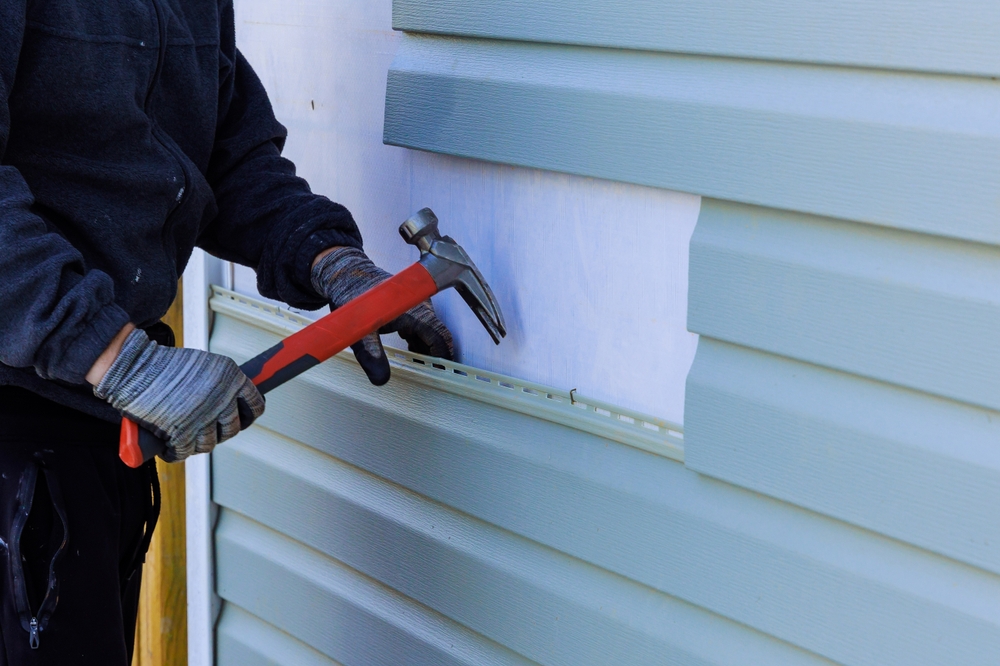
Installing new siding materials
The installation of new siding starts with applying a specialized wrap to prevent water intrusion and, if selected, adding insulation for enhanced comfort. The process begins at the bottom, where the first row is carefully aligned to ensure straightness.
As the installation progresses upward, precise spacing is maintained to account for weather fluctuations. Workers cut the siding pieces accordingly and add metal flashing for additional water protection around windows, doors, and pipes to ensure a snug fit around them.
Also, special care is taken at corners and edges to guarantee a secure installation. Once the siding is fully installed, a thorough inspection is conducted to ensure all components are properly aligned and securely fastened.
Sealing and finishing touches
Once the siding is installed, all cracks are sealed with caulk to prevent water infiltration and enhance insulation. Trim pieces are then added around windows and doors, and corner pieces are installed for a polished finish. Any chosen decorative elements are also put in place.
Finally, the area is thoroughly cleaned, with all trash and old materials removed. A final inspection is conducted to ensure everything meets your satisfaction. The team will also provide care instructions and address any last-minute questions.
Final inspection and walkthrough
At the end of the project, the contractor inspects the work for any mistakes or issues and makes any necessary corrections. They then present the completed job to you, explaining how it safeguards your home and addressing any questions.
Additionally, the contractor provides care instructions to ensure the siding’s longevity and offers guidance on routine maintenance. They leave you with contact information for any future needs. Once you’re satisfied with the results, the job is considered complete.
Choosing a Siding Company
Factors to consider
Licensing and certification
Verify that the company holds the appropriate licenses and certifications. This step is crucial to ensure that they adhere to all local regulations.
Request to see their licenses and check for any specialized certifications related to siding work. These certifications indicate that the company is knowledgeable and committed to staying updated with the latest siding techniques.
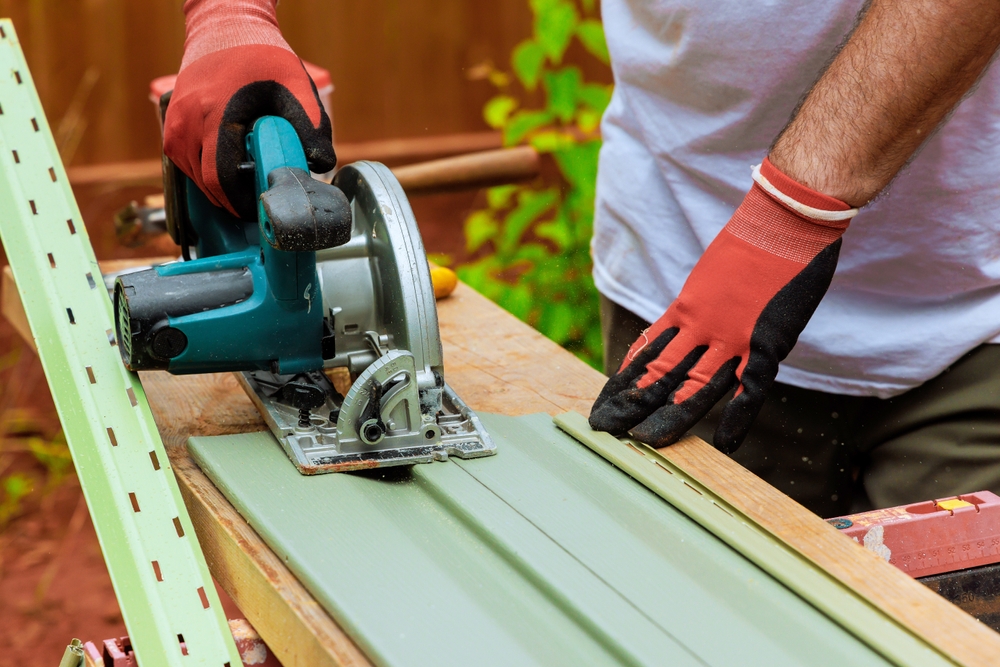
Experience and expertise
Consider the company’s experience. A long-standing business typically has a wealth of knowledge and expertise. With years of working on various homes and solving diverse problems, they likely know their stuff.
Request to see examples of their previous work. This will help you assess whether they can meet your specific needs. Additionally, some companies specialize in particular types of siding. If you have a specific type in mind, seek a company that excels in that area.
Response time and availability
It’s crucial to select a company that is both accessible and responsive. Consider their speed in replying to your initial inquiry as a key factor. Inquire about their availability to start your project and the estimated timeline for completion. Also, it’s beneficial to understand their ability to promptly handle urgent situations, such as storm damage to your siding.
Reviews and testimonials
Before making a decision, take time to review feedback from others about the company. Look up online reviews and request references from past customers.
If possible, speak directly with these customers to gain insights into their experiences. Plus, ask to see before-and-after photos of the company’s previous work; these images can provide valuable insight into the quality of their services.
Insurance coverage
Make sure to ask about insurance coverage when choosing a company. They should have liability insurance to protect you if something goes wrong.
Workers’ compensation is also crucial, as it protects you from potential lawsuits if an employee gets injured while working on your property. Moreover, inquire about warranties. A comprehensive warranty reflects the company’s confidence in its work and ensures that it stands behind its services.
Technology and equipment used
Inquire about the company’s tools and equipment. Modern, high-quality tools often result in superior work. Ask whether they employ special software to monitor and manage your project, which can contribute to a smoother process.
In addition, check if they prioritize eco-friendly practices. Using sustainable materials and methods can benefit both your budget and the environment.
Questions to ask potential companies
When selecting a siding company, start by asking targeted questions to evaluate their expertise. Begin by discussing their approach to your specific project; this will reveal how well they understand your needs and how they plan to address them. Ask about potential challenges they foresee and listen to their honest assessments, which will help you anticipate and prepare for any issues.
Next, delve into the details of their warranty. Ensure you understand the scope of coverage and its duration. Clarify their policy on handling post-installation issues.
A reputable company will stand behind its work and be willing to return to address any problems that may arise after the project is completed. Their readiness to correct issues demonstrates their commitment to quality service.
DIY vs. Professional Siding Installation
When DIY might be feasible
You might want to tackle small siding projects yourself, such as repairing a few damaged pieces or painting and refinishing. If you’re handy with tools and can match the siding type, you can enhance your home’s appearance without the need for a complete replacement.
DIY is also a great option for smaller structures like sheds. However, ensure you’re comfortable climbing ladders and working at heights. Be sure to clean and prepare the surface thoroughly, and be ready to invest extra time and effort into the project.
Benefits of hiring professionals
It’s generally advisable to hire professionals for siding installation. These experts are adept at handling various types of siding and ensuring proper installation. They stay current with best practices and local building codes, use the appropriate tools, and install insulation effectively to enhance energy efficiency.
Furthermore, professionals complete the job more quickly, minimize disruptions, and provide precise timelines. And they often offer warranties and carry insurance, which safeguards you against potential issues and offers peace of mind.
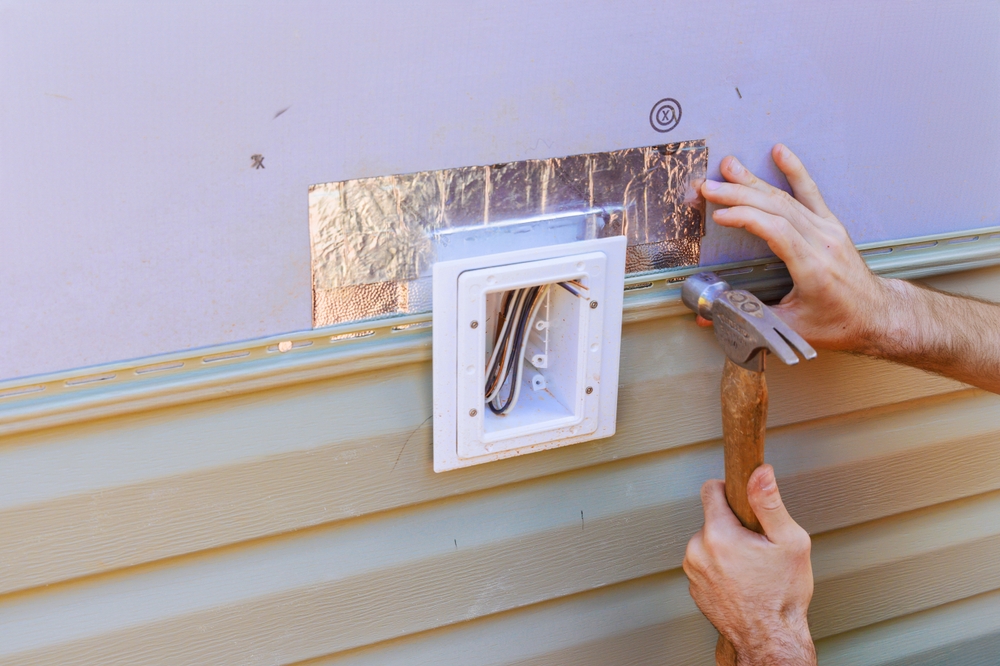
Potential pitfalls of DIY efforts
Installing siding yourself can lead to problems such as lacking the appropriate tools, making measurement errors, and leaving gaps that may damage water or bugs. DIY projects often take longer than expected and can be physically demanding, increasing the risk of inadvertently damaging your home.
Also, some siding warranties might be voided if a professional does not perform the installation. Given these potential issues, hiring a professional is usually the better choice despite the higher initial cost. A professional ensures a high-quality finish and long-term reliability, offering peace of mind that your siding will be properly installed and protected.
Cost Considerations and Budgeting
Breaking down costs
When planning new siding, it’s essential to account for all associated costs, including materials, labor, and permits. Material prices vary significantly: vinyl is generally more affordable, while wood or fiber cement tends to be more expensive. Plus, the size and complexity of your home will affect the overall cost, as larger or more intricate designs require more materials.
Labor costs also fluctuate based on your location and the complexity of the installation. Be sure to factor in permit and inspection fees, which can differ by region. To ensure a smooth process, include all these elements in your budget from the beginning.
Tips for staying within budget
Here’s a list of tips for staying within budget:
- Get quotes from at least three companies.
- Ensure quotes cover the same work and materials.
- Consider long-term costs, not just the initial price.
- Think about maintenance and energy efficiency.
- Look for off-season deals (late fall/winter).
- Be flexible with your project start date.
- Compare quotes carefully to understand fair pricing.
- Ask about included services and current promotions.
- Consider company reputation alongside price.
Financing options and incentives
If you need help funding your siding project, explore home improvement loans from banks or financing plans offered by siding manufacturers. It’s important to compare various options and be vigilant for hidden fees or conditions.
Besides, look into energy efficiency programs that may offer rebates or tax credits, which can lead to significant savings. Consulting with your contractor or an accountant can provide valuable insights into these opportunities. Don’t forget to check for promotional rates from lenders, as they can also offer beneficial terms.
Contingency planning for unexpected expenses
To finance your siding project effectively, consider home improvement loans from banks or explore manufacturer financing plans. Carefully compare these options, paying close attention to hidden fees and conditions.
Also, look into energy efficiency programs that might offer rebates or tax credits. Consulting with your contractor or an accountant can provide valuable insights.
We suggest taking advantage of promotional rates from lenders to save more. Don’t forget to check for local grants or assistance programs that might be available. Be sure to review all terms thoroughly before committing to any financing plan, ensuring you understand all aspects before deciding.
Maintaining Your Siding
Regular maintenance tips
Caring for your siding will keep your home looking good and protected. You should clean your siding regularly with a soft brush and mild soap, avoiding harsh chemicals and rough tools to prevent dirt and mold buildup.
- Inspect the siding for damage, such as cracks, loose pieces, or warping. Also, address any small problems immediately by replacing loose nails, sealing gaps with caulk, and touching up paint on minor scratches.
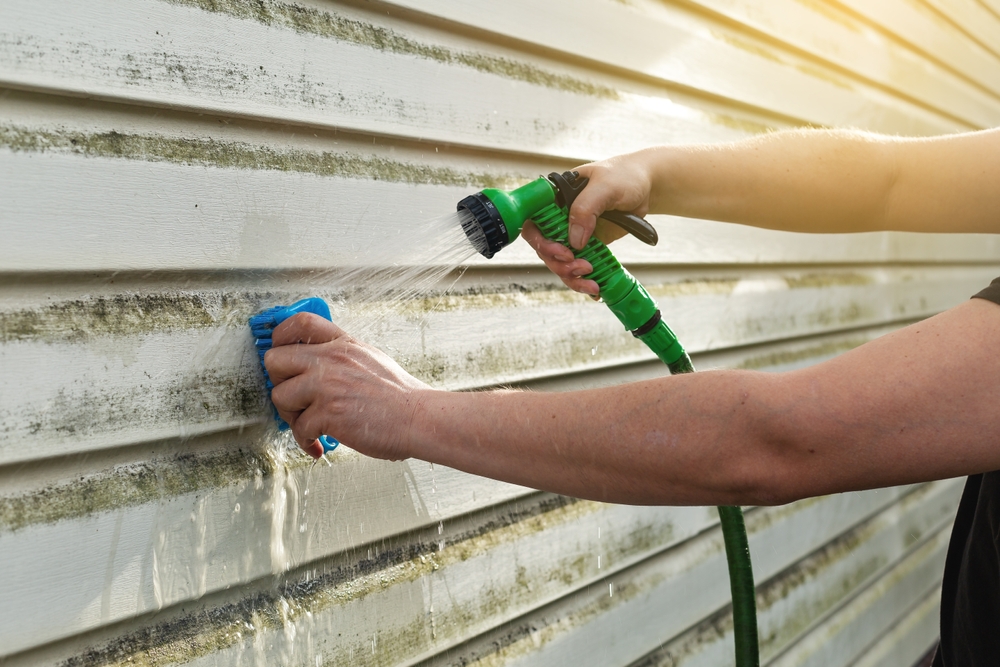
Seasonal maintenance checklists
Each season requires specific siding care. In spring, clean off winter dirt and inspect for damage. During summer, check for sun damage and ensure sprinklers aren’t hitting the siding.
In fall, clear gutters and trim nearby branches to prepare for winter. In winter, remove snow buildup and check for ice dams. Regular seasonal care helps protect your siding year-round and maintains its appearance and durability.
Signs your siding needs professional attention
If you spot large cracks, holes, or significant rot in your siding, or see extensive warping or peeling paint, it’s time to call a professional. Water damage, such as stains inside near exterior walls, and increased energy bills can also signal serious issues.
Address these major problems with expert help to keep your home safe and well-maintained. Early intervention by a professional can prevent further damage and costly repairs down the line.
Sustainable and Eco-Friendly Siding Options
Choosing energy-efficient materials
Choosing energy-efficient siding is a smart move that offers both financial and environmental benefits. Insulated vinyl siding, for example, features a layer of foam that improves your home’s insulation, leading to lower energy bills. Similarly, fiber cement siding is durable and requires less energy to produce, reducing your carbon footprint.
Another great option is engineered wood siding, which uses wood scraps and resins, effectively minimizing waste while providing a natural look. By selecting any eco-friendly options, you can keep your home comfortable year-round, enhance its value, and contribute to a more sustainable future.
Eco-friendly siding options
If you want to be even more eco-friendly, there are some great choices. Reclaimed wood siding breathes new life into old materials, adding a unique character to your home. Recycled metal siding is incredibly durable and can be reused multiple times, reducing waste.
Similarly, natural stone veneer offers a beautiful finish with minimal processing, making it a sustainable choice. These options all contribute to reducing waste and conserving resources, making them ideal for environmentally conscious homeowners.
Benefits of green siding solutions
Opting for green siding comes with a range of benefits that extend beyond just a better-looking exterior. One of the most significant advantages is the potential savings on energy bills, as this type of siding is designed to provide superior insulation, keeping your home warmer in the winter and cooler in the summer. Not only does this help reduce energy consumption, but it also lowers your carbon footprint—a win for both your wallet and the planet.
Moreover, green siding is often made using sustainable materials and methods that minimize resource use and reduce pollution. This means fewer harsh chemicals, which translates to healthier indoor air quality for you and your family.
The appeal of eco-friendly siding doesn’t stop there; it can boost your home’s value by attracting environmentally conscious buyers who value energy efficiency. By choosing green siding, you’re making a smart investment in your home’s future and contributing to a healthier world.
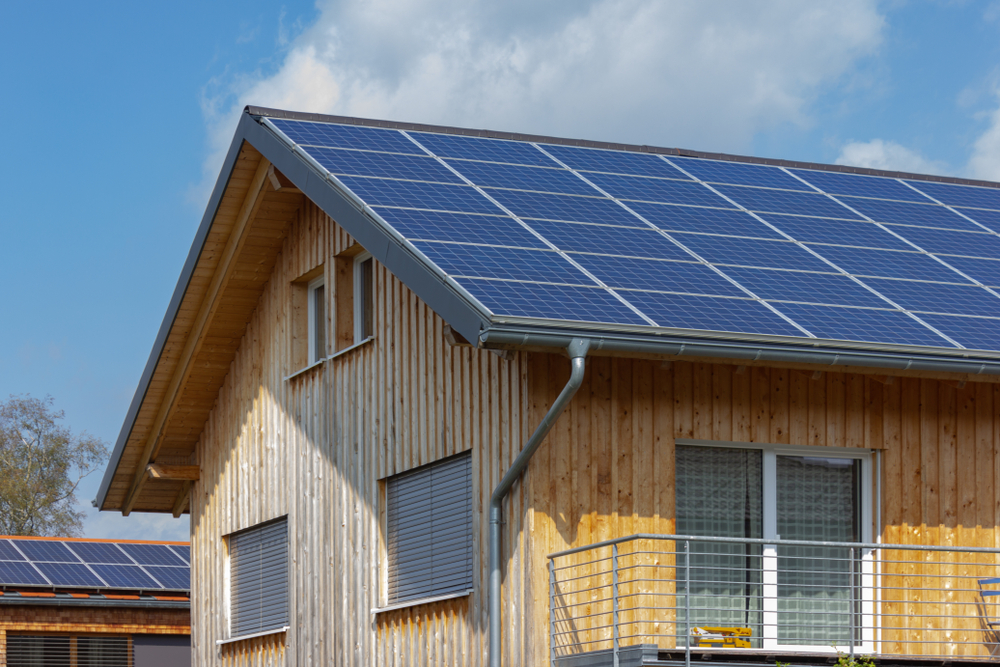
Common Challenges in Siding Installation
Dealing with unexpected issues
Unexpected issues often emerge when installing siding. For instance, once the old siding is removed, you may uncover hidden damage, like rotted wood or water damage, which must be repaired before the new siding is installed. In older homes, uneven walls can also present challenges, making it harder to achieve a smooth installation.
Weather conditions can add further complications; rain or strong winds may delay progress, while extreme temperatures can affect the performance of siding materials. Being prepared for these potential obstacles is essential, and having a backup plan can help keep your project on schedule.
Ensuring proper installation methods
Proper siding installation is crucial for both durability and performance. Using the correct fasteners and positioning them appropriately is essential, as different siding materials require specific types of nails or screws. Equally important are good insulation and moisture barriers, which help keep your home dry and energy-efficient.
Additionally, accurate cutting and fitting of siding pieces are vital. Gaps or overlaps can lead to water infiltration and pest intrusion. Installers should be meticulous, especially around windows and doors, which often need custom cuts. Carefully attending to these details ensures your siding will last longer and perform more effectively.
Managing project timelines
Maintaining a tight schedule for your siding project can be challenging, especially when unexpected issues arise. To manage this effectively, it’s crucial to account for potential delays right from the start. Weather conditions, unforeseen repairs, or late deliveries can all disrupt your timeline.
If you’re also working on other home improvements, such as installing new windows, the need for meticulous planning becomes even more apparent. Effective planning and open communication with your contractor is essential to navigating any issues smoothly.
Trends in Siding Design
Current innovations in siding technology
Siding is evolving with cutting-edge technology and intelligence. Modern siding options are designed to clean themselves using the power of sunlight and rain, ensuring homes remain attractive with minimal upkeep. Additionally, some siding now integrates built-in insulation, which helps regulate indoor temperatures, keeping homes warm in winter and cool in summer, thereby reducing energy costs.
Moreover, fire-resistant siding is becoming more common, providing essential protection for homes in areas susceptible to fires. These innovations are redefining siding, turning it from a mere decorative element into a vital component that enhances your home’s functionality and safety.
Smart home integration
Siding is joining the smart home revolution. Some new siding features built-in sensors that can alert you to issues like leaks. If something goes wrong, you’ll receive notifications on your phone. Smart siding also contributes to energy savings by integrating with other smart home devices to keep your house comfortable and efficient.
Some siding comes with built-in lights you can control from your phone, enhancing your home’s appearance at night or improving security. This advanced siding does more than just cover your walls; it offers innovative ways to manage and maintain your home.
Popular materials and finishes
Siding preferences are evolving with new trends and technologies. Engineered wood has become popular for its authentic appearance and enhanced durability. Fiber cement is another favored option, known for its resilience and ability to replicate the look of wood or brick.
Metal siding is experiencing a resurgence, especially for modern homes, thanks to its strength and recycled content. Vinyl siding remains a staple but now boasts textures that provide added visual interest.
That said, you have many stylish and durable siding options to match their aesthetic preferences. Whether you’re drawn to a traditional or contemporary look, there is a siding solution to suit your needs.
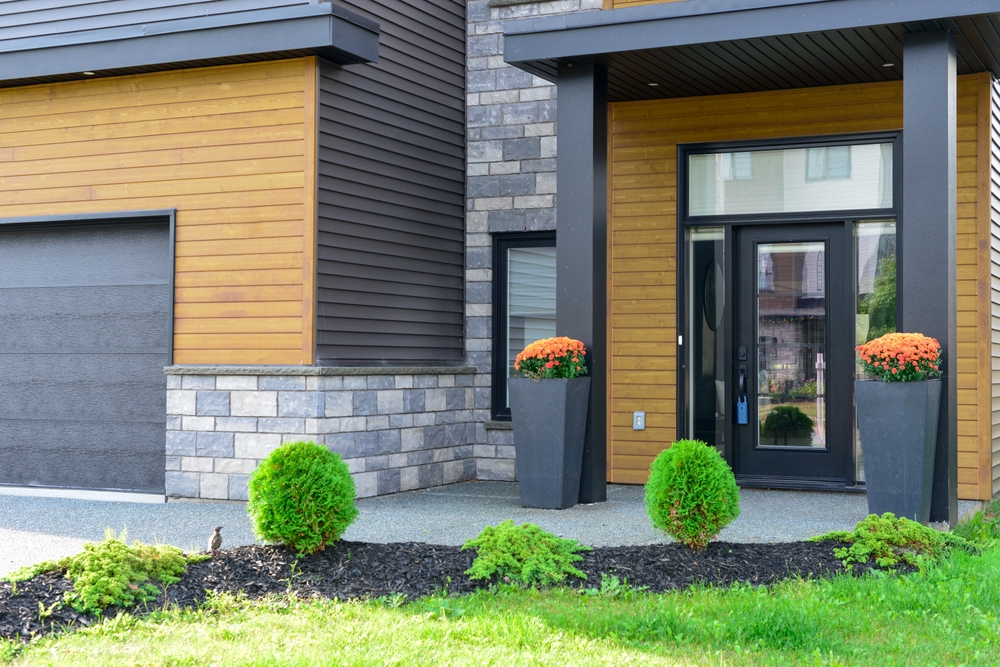
Frequently Asked Questions
How long does siding typically last?
The lifespan of siding largely depends on the material used. Vinyl siding, for instance, can last up to 40 years, while fiber cement siding may even exceed this duration. With proper maintenance, you can significantly extend the life of your siding, regardless of the material.
Wood siding generally lasts between 20 and 40 years with regular care, and aluminum siding has a similar lifespan. Conducting regular inspections and making prompt repairs can further enhance the longevity of any siding type.
Can I install siding myself, or should I hire professionals?
Although you can install siding yourself, hiring professionals is generally the better choice. Experts have the knowledge and experience to ensure the installation is done correctly, which is crucial for the siding’s performance and longevity.
Professional installation often includes warranties, while DIY projects can sometimes void the manufacturer’s warranty. Professionals are also adept at identifying and addressing underlying issues that might not be immediately apparent to homeowners.
How does siding affect energy efficiency?
High-quality siding can greatly enhance your home’s energy efficiency by serving as an additional insulation layer. This helps keep your home warm during the winter and cool in the summer, reducing your energy bills and creating a more comfortable living environment.
Materials like insulated vinyl provide extra energy-saving benefits. Ensuring proper installation is crucial for maximizing these benefits. Besides, energy-efficient siding can boost your home’s overall value.
Does vinyl siding always mean low quality?
The belief that vinyl siding is always inexpensive and low-quality is a myth. In reality, modern vinyl siding can be both durable and visually appealing. Today’s vinyl siding options are designed to offer impressive longevity and aesthetic charm.
High-quality vinyl siding can endure for decades and is available in various styles and colors. Advances in manufacturing have greatly enhanced its performance and appearance.
Does siding require maintenance?
It’s a common misconception that siding requires no maintenance. All types of siding need some level of care, even if it’s just regular cleaning. Each siding material has specific maintenance needs, so adhering to the manufacturer’s guidelines is crucial for optimal results.
Regular upkeep also helps you identify potential issues early, preventing minor problems from escalating into major repairs. This maintenance routine should include checking for loose or damaged panels, sealing gaps, and inspecting for signs of moisture intrusion.
Locations
California
- Los Angeles
- San Diego
- San Jose
- San Francisco
- Fresno
- Sacramento
- Long Beach
- Oakland
- Bakersfield
- Anaheim
- Santa Ana
- Riverside
- Stockton
- Chula Vista
- Irvine
- Fremont
- San Bernardino
- Modesto
- Fontana
- Oxnard
- Moreno Valley
- Glendale
- Huntington Beach
- Santa Clarita
- Oceanside
- Garden Grove
- Rancho Cucamonga
- Santa Rosa
- Ontario
- Elk Grove
- Corona
- Lancaster
- Palmdale
- Hayward
- Salinas
- Pomona
- Sunnyvale
- Escondido
- Torrance
- Pasadena
- Fullerton
- Orange
- Roseville
- Visalia
- Thousand Oaks
- Concord
- Simi Valley
- Santa Clara
- Victorville
- Vallejo
- Berkeley
- El Monte
- Downey
- Costa Mesa
- Inglewood
- Carlsbad
- Fairfield
- Ventura
- Temecula
- Antioch
- Richmond
- West Covina
- Murrieta
- Norwalk
- Daly City
- Burbank
- Santa Maria
- El Cajon
- San Mateo
- Rialto
- Clovis
- Jurupa Valley
- Compton
- Vista
- Mission Viejo
- South Gate
- Vacaville
- Carson
- Hesperia
- Santa Monica
- Westminster
- Redding
- Santa Barbara
- Chico
- Newport Beach
- San Leandro
- Indio
- Tracy
- Livermore
- Baldwin Park
- Merced
- Chino
- Redwood City
- Lake Forest
- Napa
- Tustin
- Buena Park
- Mountain View
- Lakewood
- San Marcos
Texas
- Houston
- San Antonio
- Dallas
- Austin
- Fort Worth
- El Paso
- Arlington
- Corpus Christi
- Plano
- Laredo
- Lubbock
- Garland
- Irving
- Amarillo
- Grand Prairie
- Brownsville
- McKinney
- Frisco
- Pasadena
- Mesquite
- Killeen
- Carrollton
- Midland
- Waco
- Denton
- Abilene
- Odessa
- Beaumont
- Round Rock
- Richardson
- Pearland
- College Station
- Tyler
- League City
- Wichita Falls
- Allen
- San Angelo
- Edinburg
- Sugar Land
- Mission
- Conroe
- Bryan
- New Braunfels
- Pharr
Florida
- Jacksonville
- Miami
- Tampa
- Orlando
- St. Petersburg
- Hialeah
- Tallahassee
- Port St. Lucie
- Cape Coral
- Fort Lauderdale
- Pembroke Pines
- Hollywood
- Miramar
- Gainesville
- Coral Springs
- Clearwater
- Miami Gardens
- Palm Bay
- Pompano Beach
- West Palm Beach
- Lakeland
- Davie
- Miami Beach
- Plantation
- Sunrise
- Boca Raton
- Deltona
- Palm Coast
- Largo
- Melbourne
New York
- New York City
- Buffalo
- Rochester
- Yonkers
- Syracuse
- Albany
- New Rochelle
- Mount Vernon
- Schenectady
- Utica
- White Plains
- Hempstead
- Troy
- Niagara Falls
- Binghamton
- Freeport
- Valley Stream
- Long Beach
- Rome
- North Tonawanda
Pennsylvania
- Philadelphia
- Pittsburgh
- Allentown
- Erie
- Reading
- Scranton
- Bethlehem
- Lancaster
- Harrisburg
- Altoona
Illionois
- Chicago
- Aurora
- Rockford
- Joliet
- Naperville
- Springfield
- Peoria
- Elgin
- Waukegan
- Champaign
- Bloomington
- Decatur
- Evanston
- Des Plaines
- Berwyn
- Wheaton
- Belleville
Ohio
- Columbus
- Cleveland
- Cincinnati
- Toledo
- Akron
- Dayton
Georgia
- Atlanta
- Augusta
- Columbus
- Savannah
- Athens
North Carolina
- Charlotte
- Raleigh
- Greensboro
- Durham
- Winston-Salem
- Fayetteville
- Cary
- Wilmington
- High Point
Michigan
- Detroit
- Grand Rapids
- Warren
- Sterling Heights
- Ann Arbor
- Lansing
- Flint
- Dearborn
- Livonia
- Troy
New Jersey
- Newark
- Jersey City
- Paterson
- Elizabeth
- Edison
- Woodbridge
- Lakewood
- Toms River
- Hamilton
- Trenton
Virginia
- Virginia Beach
- Norfolk
- Chesapeake
- Richmond
- Newport News
- Alexandria
- Hampton
- Roanoke
- Portsmouth
- Suffolk
Washington
- Seattle
- Spokane
- Tacoma
- Vancouver
- Bellevue
- Kent
- Everett
- Renton
- Federal Way
- Yakima
Massachusetts
- Boston
- Worcester
- Springfield
- Lowell
- Cambridge
- New Bedford
- Brockton
- Quincy
- Lynn
- Fall River
Arizona
- Phoenix
- Tucson
- Mesa
- Chandler
- Glendale
- Scottsdale
- Gilbert
- Tempe
- Peoria
- Surprise
Tennessee
- Nashville
- Memphis
- Knoxville
- Chattanooga
- Clarksville
- Murfreesboro
- Franklin
- Jackson
- Johnson City
- Bartlett
Indiana
- Indianapolis
- Fort Wayne
- Evansville
- South Bend
- Carmel
- Fishers
- Bloomington
- Hammond
- Gary
- Lafayette
Missouri
- Kansas City
- St. Louis
- Springfield
- Columbia
- Independence
- Lee’s Summit
- O’Fallon
- St. Joseph
- St. Charles
- St. Peters
Maryland
- Baltimore
- Columbia
- Germantown
- Silver Spring
- Waldorf
- Glen Burnie
- Ellicott City
- Frederick
- Dundalk
- Rockville
Wisconsin
- Milwaukee
- Madison
- Green Bay
- Kenosha
- Racine
- Appleton
- Waukesha
- Oshkosh
- Eau Claire
- Janesville
Colorado
- Denver
- Colorado Springs
- Aurora
- Fort Collins
- Lakewood
- Thornton
- Arvada
- Westminster
- Pueblo
- Centennial
Minnesota
- Minneapolis
- St. Paul
- Rochester
- Duluth
- Bloomington
- Brooklyn Park
- Plymouth
- St. Cloud
- Eagan
- Woodbury
South Carolina
- Columbia
- Charleston
- North Charleston
- Mount Pleasant
- Rock Hill
- Greenville
- Summerville
- Sumter
- Goose Creek
- Hilton Head Island
Alabama
- Birmingham
- Montgomery
- Mobile
- Huntsville
- Tuscaloosa
Louisiana
- New Orleans
- Baton Rouge
- Shreveport
- Lafayette
- Lake Charles
Kentucky
- Louisville
- Lexington
- Bowling Green
- Owensboro
- Covington
Oregon
- Portland
- Salem
- Eugene
- Gresham
- Hillsboro
Oklahoma
- Oklahoma City
- Tulsa
- Norman
- Broken Arrow
- Edmond
Connecticut
- Bridgeport
- New Haven
- Stamford
- Hartford
- Waterbury
Iowa
- Des Moines
- Cedar Rapids
- Davenport
- Sioux City
- Iowa City
Mississippi
- Jackson
- Gulfport
- Southaven
- Hattiesburg
- Biloxi
Arkansas
- Little Rock
- Fort Smith
- Fayetteville
- Springdale
- Jonesboro
Utah
- Salt Lake City
- West Valley City
- Provo
- West Jordan
- Orem
Nevada
- Las Vegas
- Henderson
- Reno
- North Las Vegas
- Sparks
Kansas
- Wichita
- Overland Park
- Kansas City
- Olathe
- Topeka
New Mexico
- Albuquerque
- Las Cruces
- Rio Rancho
- Santa Fe
- Roswell
Nebraska
- Omaha
- Lincoln
- Bellevue
- Grand Island
- Kearney
West Virginia
- Charleston
- Huntington
- Parkersburg
- Morgantown
- Wheeling
Idaho
- Boise
- Meridian
- Nampa
- Idaho Falls
- Pocatello
Hawaii
- Honolulu
- Pearl City
- Hilo
- Kailua
- Waipahu
Maine
- Portland
- Lewiston
- Bangor
- South Portland
- Auburn
New Hampshire
- Manchester
- Nashua
- Concord
- Derry
- Dover
Rhode Island
- Providence
- Warwick
- Cranston
- Pawtucket
- East Providence
Montana
- Billings
- Missoula
- Great Falls
- Bozeman
- Butte
Delaware
- Wilmington
- Dover
- Newark
- Middletown
- Smyrna
South Dakota
- Sioux Falls
- Rapid City
- Aberdeen
- Brookings
- Watertown
North Dakota
- Fargo
- Bismarck
- Grand Forks
- Minot
- West Fargo
Alaska
- Anchorage
- Fairbanks
Vermont
- Burlington
- South Burlington
Wyoming
- Cheyenne
- Casper
